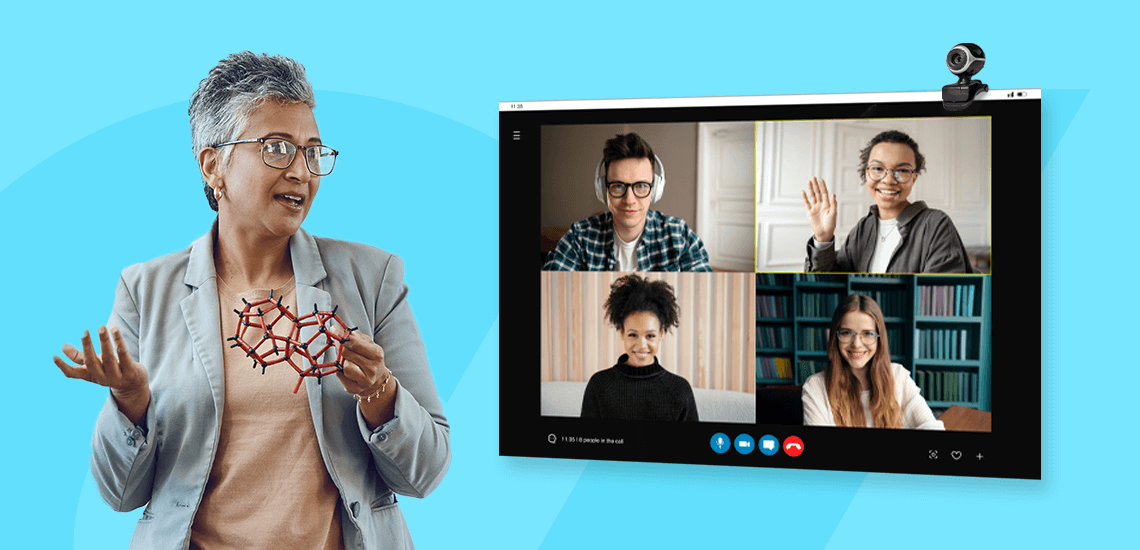In the rapidly evolving educational landscape, where hybrid and virtual classrooms have become increasingly common, facilitating meaningful discussions remains a pivotal component of effective teaching and learning. With advancements in technology and pedagogy, educators are continually seeking innovative strategies to engage students and promote dynamic interactions, regardless of the learning environment. This updated blog post explores the latest techniques and tools for fostering meaningful discussions in hybrid or virtual classrooms, ensuring that every student feels heard, engaged, and valued.
Facilitating meaningful discussions in the modern classroom: Hybrid and virtual strategies
As education continues to adapt to hybrid and virtual formats, the art of facilitating discussions has taken on new dimensions. Engaging students in meaningful dialogue is crucial for deep learning, critical thinking, and community building. Here's how educators can enhance discussion dynamics in today’s digital-first educational settings.
Establish clear guidelines and expectations
Updated approach: Begin by setting clear, inclusive guidelines for discussions, emphasizing respect, openness, and the value of diverse perspectives. Use digital platforms to share these guidelines in advance and revisit them regularly. Incorporating social-emotional learning (SEL) principles can also help create a safe, supportive environment conducive to open dialogue.
Leverage technology to enhance participation
Interactive tools: Utilize the latest interactive tools to facilitate discussions in hybrid and virtual classrooms. Platforms like Miro or Padlet for collaborative brainstorming, or features like Zoom breakout rooms for small group discussions, can significantly increase engagement. Polling and Q&A apps also encourage participation by allowing students to contribute anonymously, making it easier for shy or reserved individuals to share their thoughts.
Foster a culture of active listening
Engagement strategies: Encourage active listening by modeling it yourself and acknowledging students' contributions with specific, positive feedback. Use techniques like "think-pair-share" or "silent debate" even in a virtual setting to ensure students are not only heard but also feel their views are genuinely considered and valued.
Utilize asynchronous discussion platforms
Flexibility and inclusivity: Asynchronous discussion forums, such as those offered by LMS platforms or dedicated apps like Flipgrid, allow students to engage in conversations at their own pace, providing time for reflection and thoughtful participation. This approach is particularly beneficial for students who may need more time to articulate their thoughts or are participating from different time zones.
Encourage diverse forms of expression
Creative contributions: Recognize and accommodate different communication styles by allowing students to express their ideas in various formats, such as short videos, audio recordings, or visual presentations. This not only enriches the discussion but also empowers students to share their insights in ways that feel most comfortable to them.
Promote real-world connections
Contextual discussions: Make discussions more meaningful by linking them to real-world issues, current events, or case studies relevant to students' lives. Encouraging students to bring in external resources or personal experiences can deepen the conversation and foster a more engaging and relatable learning experience.
Continuous feedback and reflection
Iterative improvement: Regularly seek feedback from students on the discussion process and use their insights to refine strategies and tools. Reflective practices, such as asking students to journal about their discussion experiences or share feedback in a dedicated forum, can provide valuable perspectives for enhancing future discussions.
Nurturing dynamic discussions in digital classrooms
In the context of modern education, where hybrid and virtual classrooms are becoming the norm, the ability to facilitate meaningful discussions is more critical than ever. By leveraging technology, establishing inclusive practices, and fostering a culture of active participation and reflection, educators can create vibrant learning communities where every student’s voice is heard. As we continue to navigate the challenges and opportunities of digital education, these strategies will remain essential in promoting deep, meaningful learning and engagement across all formats.







